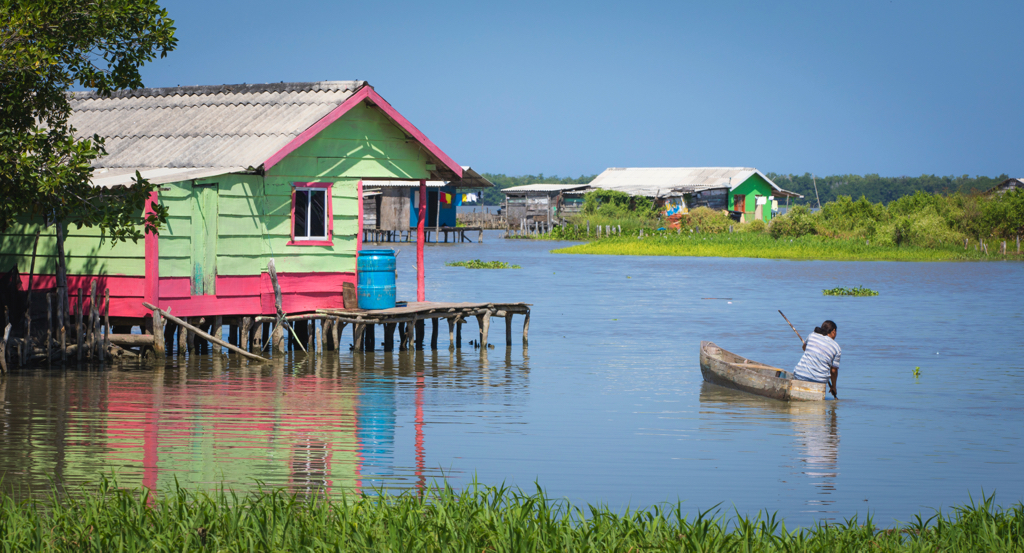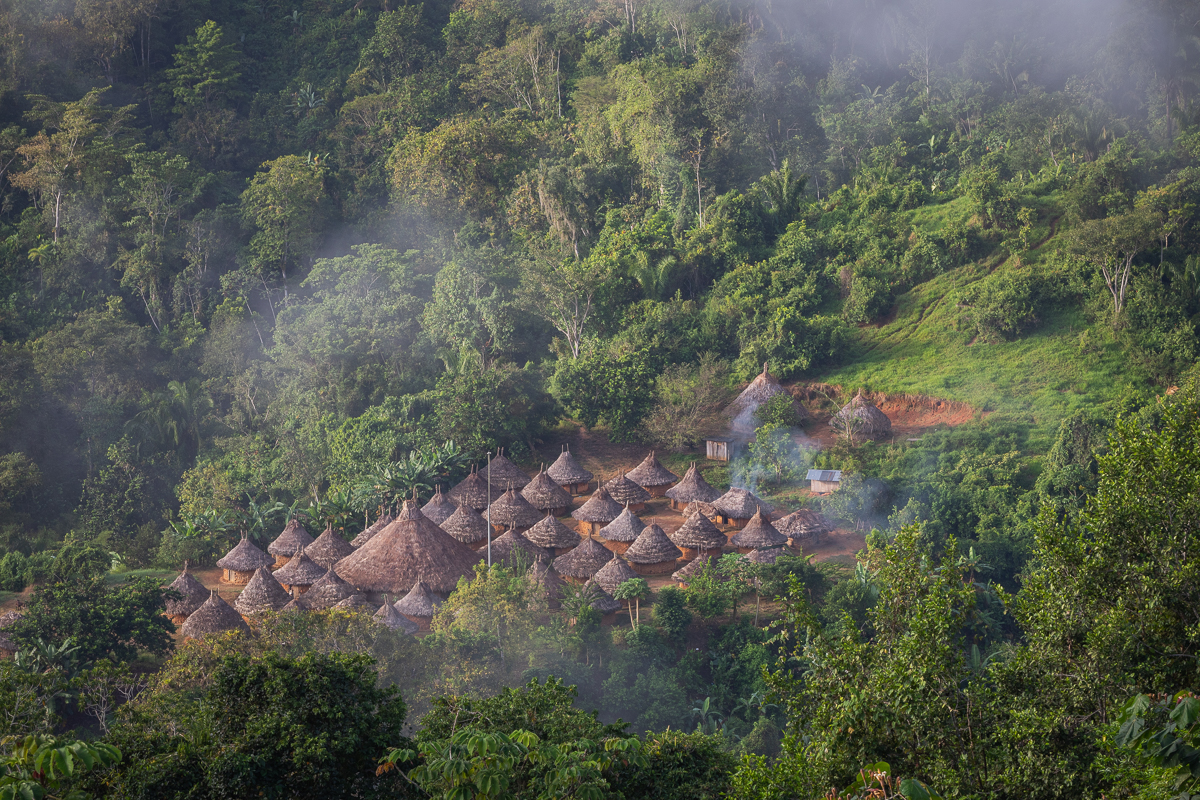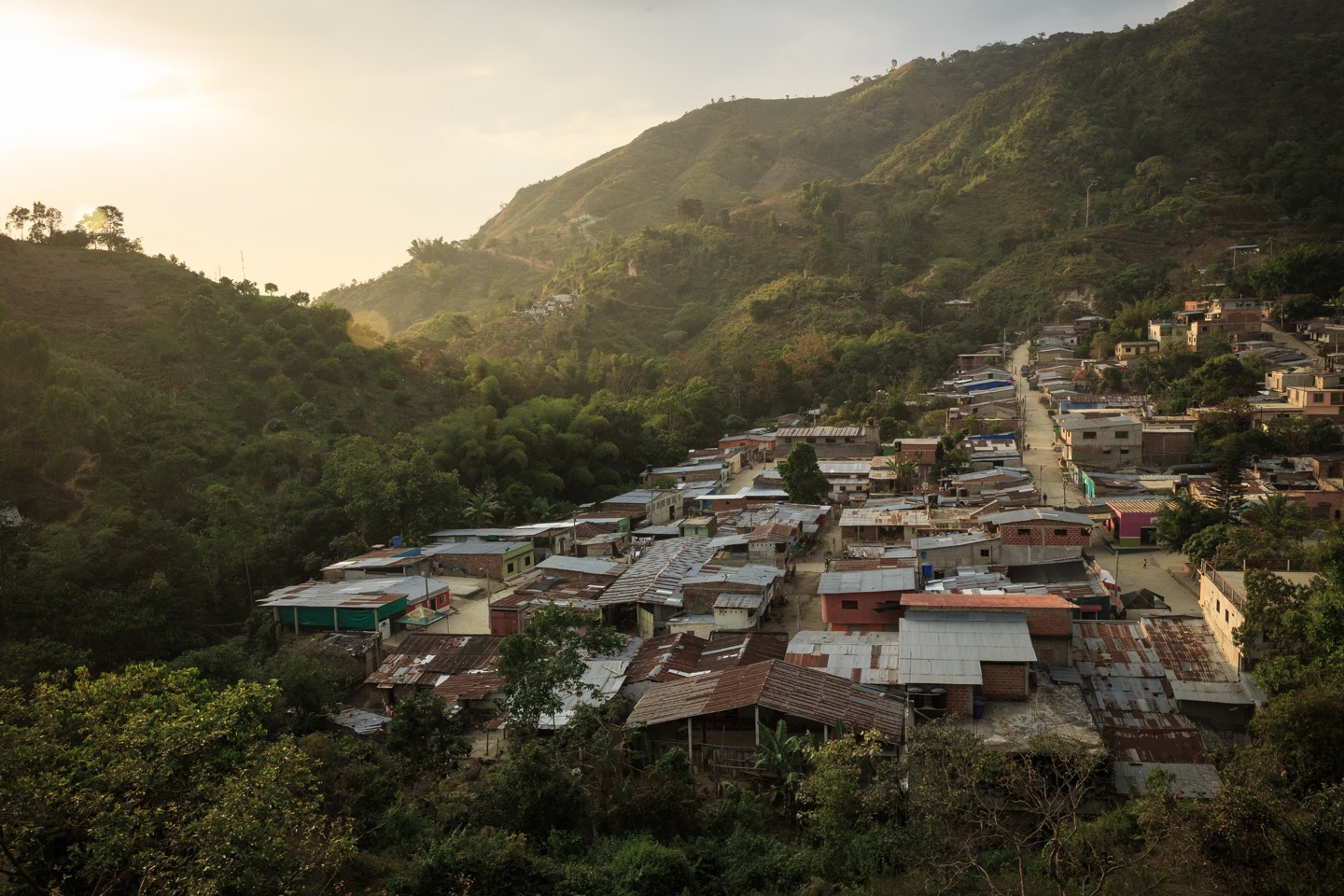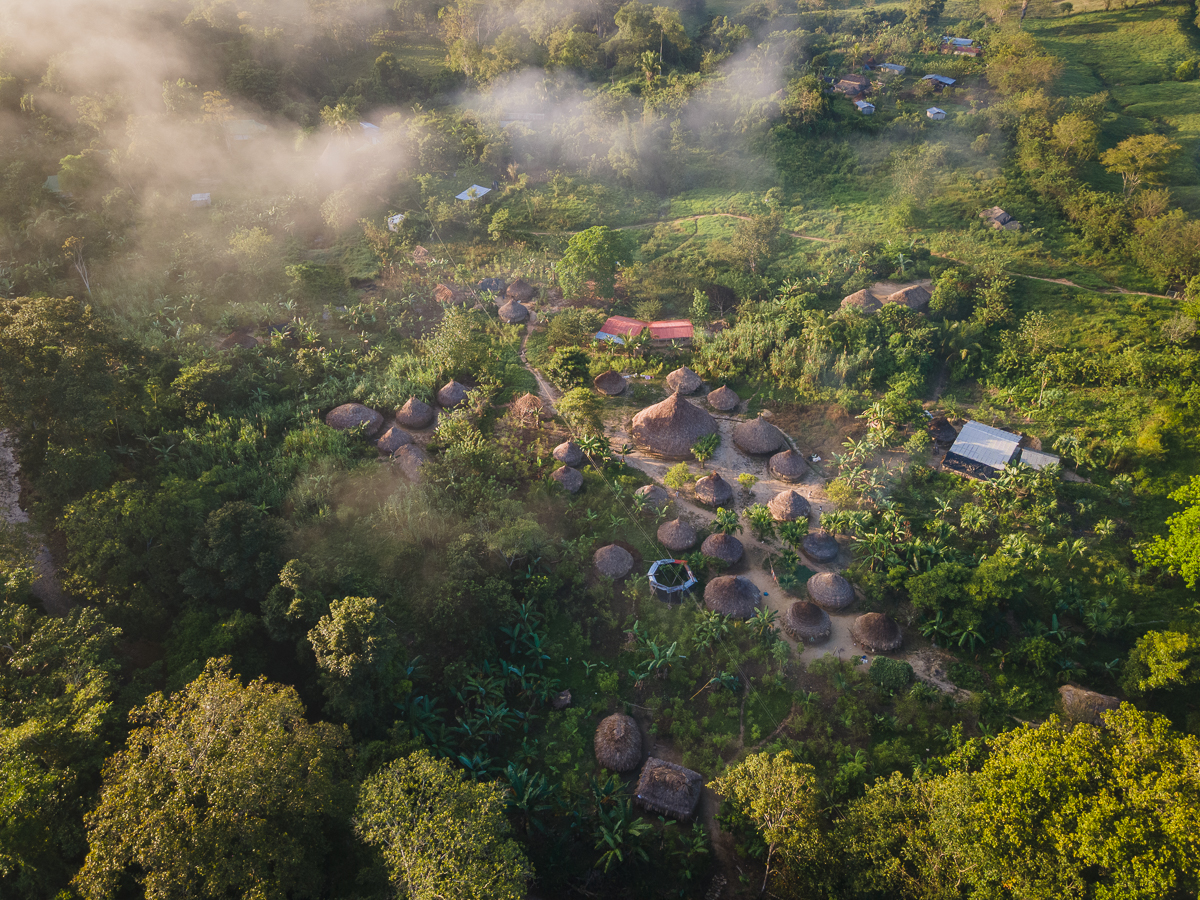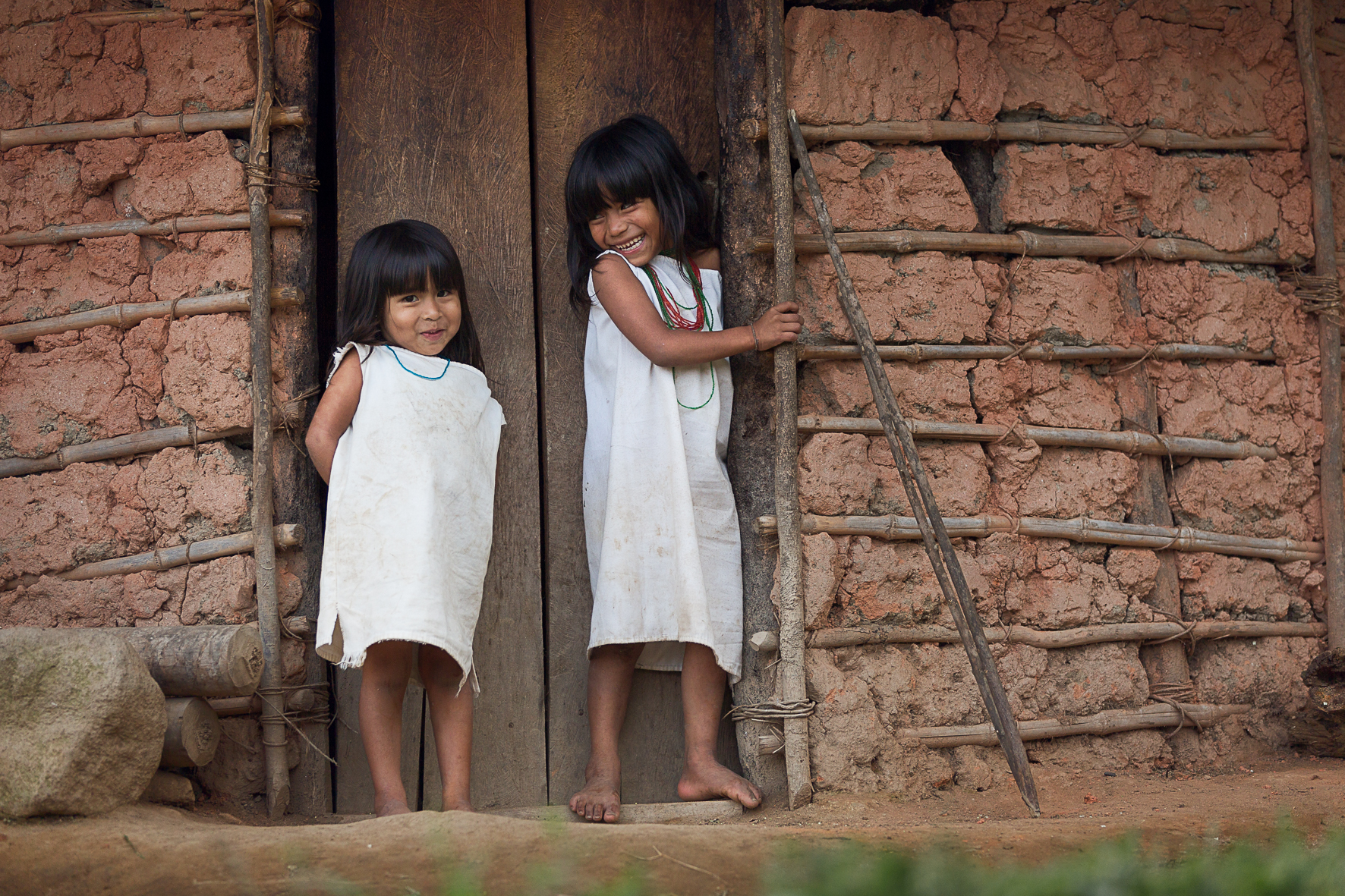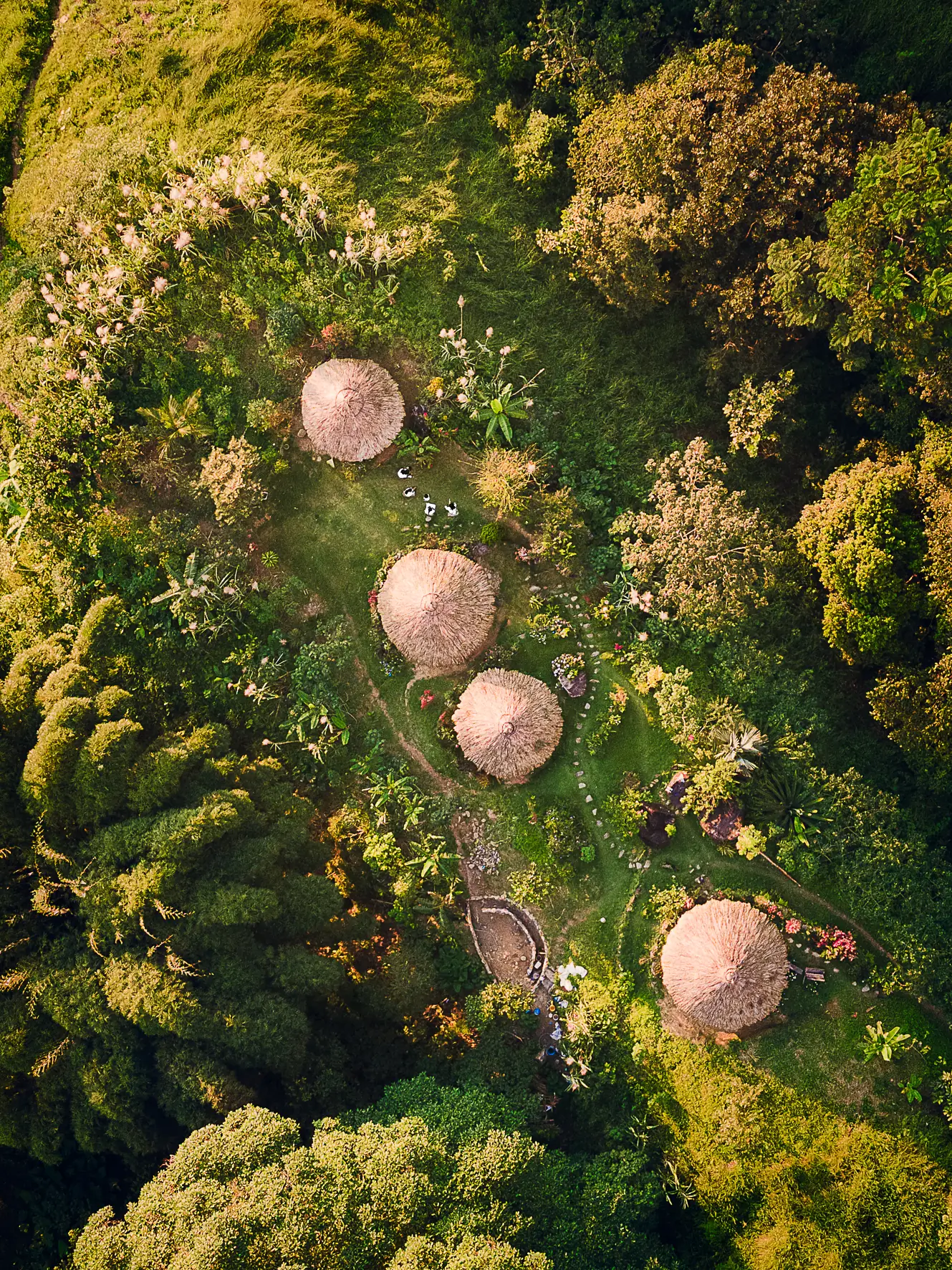Caribbean Region (Región Caribe)
A vibrant tapestry of azure beaches, rich culture, and pulsating rhythms, the Caribbean Region in Colombia enchants visitors with its lush landscapes and warm, welcoming communities.
Sun-drenched beaches, vibrant Afro-Caribbean culture, and rhythmic salsa beats define Colombia's Caribbean Region. From Cartagena's colonial charm to Tayrona's lush jungles meeting turquoise waves, this coastal paradise blends history, nature, and fiesta. Savor fresh seafood, dance to cumbia, and unwind in hammocks swaying under coconut palms—the Región Caribe is where Colombia’s soul shines brightest.
Essentials
- Best Months to Visit: December, February, January, March
zone Facts
- Geographical Location: Coastal area in northern Colombia, bordering the Caribbean Sea.
- Main City/Town: Barranquilla (a major urban and economic hub).
- Approximate Area: ~132,288 sq km (covers about 11.6% of Colombia's total area).
- Key Geographical Features: Sierra Nevada de Santa Marta (world's highest coastal mountain range), Magdalena River (Colombia's principal river), Tayrona National Park, and La Guajira Desert.
- Dominant Climate Type: Tropical savanna and arid (hot and humid with distinct wet/dry seasons; drier in La Guajira).
- Population: ~11 million (approx. 22% of Colombia's total population).
- Main Economic Activities: Tourism (beaches, cultural festivals), agriculture (bananas, coffee, cotton), mining (coal in La Guajira), and port commerce (Barranquilla, Cartagena).
- Common Languages/Dialects Spoken: Spanish (Coastal Caribbean dialect with distinct slang), Wayuu (indigenous language in La Guajira).
- Best Time to Visit: December to April (dry season for beach activities; avoid hurricane-prone months).
- Unique Selling Points:
- Vibrant Afro-Caribbean culture (e.g., Barranquilla Carnival, UNESCO-listed).
- Pristine beaches (e.g., San Andrés, Palomino) and biodiverse ecosystems (e.g., coral reefs in Rosario Islands).
Tours and Day Trips
Rosario Islands Snorkeling & Island Hopping
Just a short boat ride from Cartagena, the Rosario Islands are a paradise of coral reefs and turquoise waters. This full-day tour typically includes snorkeling in vibrant marine ecosystems, relaxing on pristine beaches, and exploring the Oceanarium (a unique open-sea aquarium). Perfect for families and adventure seekers, the islands are part of a protected national park, ensuring unforgettable natural beauty.
Tayrona National Park Jungle & Beach Trek
Located about 35 km from Santa Marta, Tayrona National Park is a must-visit for nature lovers. This day trip combines hiking through lush jungle trails with stops at secluded beaches like Cabo San Juan. Travelers can spot wildlife, swim in crystal-clear coves, and learn about the indigenous Tayrona culture. Ideal for hikers and eco-tourists, the trek takes 4–6 hours, depending on the route.
La Guajira Desert & Punta Gallinas Adventure
Venture to Colombia’s northernmost tip for a surreal landscape of windswept dunes and flamingo-filled lagoons. This multi-day tour (often 2–3 days) from Riohacha includes visits to remote Wayuu indigenous communities, sunset views at Taroa Dunes, and the dramatic cliffs of Punta Gallinas. Best suited for intrepid travelers and culture enthusiasts, the trip showcases the region’s raw, untouched beauty.
Barranquilla Carnival Experience
For a burst of Caribbean culture, time your visit with Barranquilla’s Carnival (February/March), one of the world’s largest festivals. Day tours offer front-row seats to colorful parades, live music, and traditional dances like cumbia. Visitors can also sample local street food and learn about the carnival’s Afro-Colombian roots. A festive highlight for culture buffs and party lovers.
Minca: Coffee & Waterfalls in the Sierra Nevada
Escape the coast for a day in the cool mountains of Minca, a charming village near Santa Marta. Tours often include visits to organic coffee farms, waterfall swims (like Pozo Azul), and birdwatching for endemic species. The laid-back vibe and panoramic views make it a hit with nature lovers and slow travelers. The trip is roughly 1.5 hours from Santa Marta.
When to visit
Best Time to Visit Caribbean Region (Región Caribe)
The Caribbean Region of Colombia is a tropical paradise with warm temperatures year-round, but the best time to visit depends on weather patterns, crowds, and local events. Below is a breakdown of the seasons and their unique characteristics.
Seasonal Breakdown
Dry Season (December - April)
The dry season is the most popular time to visit, with minimal rainfall and plenty of sunshine. Temperatures range from 28°C to 32°C (82°F to 90°F), and humidity is lower compared to other months.
- Pros: Ideal for beach activities, snorkeling, and exploring coastal towns. Clear skies make it perfect for photography and outdoor adventures.
- Cons: Higher tourist crowds and elevated accommodation prices, especially during December and January.
- Events: The Barranquilla Carnival (February or March) is one of Colombia’s most vibrant festivals, attracting thousands of visitors.
Wet Season (May - November)
The wet season brings higher humidity and frequent, though often brief, afternoon showers. Temperatures remain warm, averaging 26°C to 30°C (79°F to 86°F).
- Pros: Fewer tourists mean lower prices and quieter beaches. Lush landscapes and vibrant greenery make it a great time for nature lovers.
- Cons: Heavy rainfall, particularly in October and November, can disrupt travel plans and outdoor activities.
- Events: The Festival de la Leyenda Vallenata (April/May) in Valledupar celebrates traditional Colombian music.
Shoulder Seasons (Late April - Early June & September - November)
These transitional periods offer a balance between the dry and wet seasons, with moderate rainfall and fewer crowds.
- Pros: Good weather conditions with lower prices and fewer tourists. Ideal for travelers seeking a relaxed experience.
- Cons: Some attractions may have reduced hours, and occasional rain showers can occur.
Overall Recommendation
The best time to visit the Caribbean Region is during the dry season (December - April) for optimal beach weather and cultural events. However, budget travelers or those preferring quieter destinations should consider the shoulder seasons (April-June or September-November).
Considerations
- Peak Season (December - March): Expect higher prices and crowded beaches, especially around holidays.
- Off-Peak (May - November): Lower costs and fewer tourists, but be prepared for rain.
What to pack
Essentials for Tropical Heat & Humidity
The Caribbean Region of Colombia is hot, humid, and often sunny, with occasional rain showers. Pack lightweight, breathable fabrics to stay cool and comfortable.
- Quick-dry clothing: Linen or moisture-wicking fabrics help combat sweat and humidity.
- Reef-safe sunscreen (SPF 50+): Intense sun near the coast requires strong protection, especially for snorkeling or swimming.
- Wide-brimmed hat & UV-blocking sunglasses: Essential for sun protection during beach days or city exploration.
- DEET-based insect repellent: Mosquitoes are prevalent, especially near water or at dusk.
- Collapsible water bottle: Stay hydrated in the heat; many areas have safe refill stations.
Beach & Coastal Adventures
With stunning beaches, islands, and coral reefs, water activities are a highlight here.
- Rash guard or swim shirt: Protects against sunburn and jellyfish while swimming or snorkeling.
- Water shoes: Rocky shores or coral reefs can be tough on bare feet.
- Dry bag: Keeps phones, cash, and essentials safe during boat trips or sudden rain.
- Snorkel gear (optional): If you prefer your own equipment for exploring reefs.
Rain & Unexpected Showers
Sudden tropical downpours are common, especially in the wet season (May-November).
- Compact rain poncho or umbrella: Lightweight and easy to carry for sudden storms.
- Waterproof phone case: Protects your device during beach trips or heavy rain.
- Fast-drying sandals: Ideal for walking in wet conditions.
Cultural & Practical Considerations
Respect local customs and prepare for casual but modest attire in certain settings.
- Light scarf or shawl: Useful for covering shoulders when visiting churches or small towns.
- Small cash (Colombian pesos): Many smaller vendors or rural areas don’t accept cards.
- Spanish phrasebook or translation app: English isn’t widely spoken outside tourist hubs.
Getting there
Driving Routes
Reaching the Caribbean Region of Colombia by car offers a scenic and flexible option. The main highways that connect to this area include:
- Route 90 (La Troncal del Caribe): This runs along the coast, connecting cities such as Barranquilla, Santa Marta, and Cartagena. It offers beautiful coastal views and access to multiple beach destinations.
- Route 25: Extending from Bogotá to the Caribbean coast, this route passes through important regional hubs such as Medellín and eventually leads to Cartagena.
Be aware that while most major roads are well-maintained, some rural or smaller routes may require a more robust vehicle, especially in the rainy season.
Public Transport
The public transport network in Colombia can also take you to the Caribbean Region:
- Intercity Buses: Numerous bus companies offer routes from major Colombian cities to key destinations in the Caribbean Region. Terminals in Bogotá, Medellín, and Cali provide frequent service with varying levels of comfort.
- Local Buses: Once in the region, local buses and minivans are a cost-effective way to travel between smaller towns and cities.
Airports
The Caribbean Region is served by several airports, which make flying a convenient option:
- Rafael Núñez International Airport (CTG): Located in Cartagena, this is the region's largest airport with numerous domestic and international flights.
- Simón Bolívar International Airport (SMR): Near Santa Marta, serving many domestic connections.
- Ernesto Cortissoz International Airport (BAQ): Located in Barranquilla, providing options for both national and some international travel.
These airports have several car rental agencies and are well-connected by taxi services and shuttles to nearby destinations.
Train Options
Currently, Colombia does not have a well-developed passenger train network serving the Caribbean Region. Travelers generally rely on buses or flights for larger distances.
Additional Travel Tips
While taxi services and ride-sharing apps like Uber are available in larger cities, their availability in smaller towns might be limited. Renting a car can offer more flexibility should you wish to explore remote areas. Always check the current safety advisories and local travel conditions before planning your routes.
Getting around
Public Buses & Colectivos
The Caribbean Region relies heavily on buses and colectivos (shared minivans) for affordable urban and intercity travel. In cities like Cartagena, Barranquilla, and Santa Marta, buses follow fixed routes but rarely have posted schedules—ask locals or your hotel for guidance. Colectivos are faster and slightly more expensive, departing when full. Fares are paid in cash (COP 2,000–10,000 depending on distance). For longer trips (e.g., Santa Marta to Palomino), larger coaches like Brasilia or Expreso Brasilia offer air conditioning.
- Tip: Colectivos often display destinations on windshields—shout your stop to the driver.
- Note: Buses can be crowded; keep valuables secure.
Taxis & Ride-Sharing
Taxis are plentiful in cities but always negotiate fares upfront or insist on meters (meters are rare outside Bogotá). Uber operates discreetly in Cartagena and Barranquilla, though drivers may ask you to sit in the front to avoid detection. Local apps like Picap (motorcycle taxis) and InDriver (negotiated fares) are popular for short trips. Sample fares: COP 10,000–30,000 for urban rides.
- Tip: Avoid unmarked taxis at night; hotels can call reputable services.
Walking & Cycling
Historic centers like Cartagena’s walled city are highly walkable, with shaded plazas and pedestrian-friendly streets. Bike rentals (COP 15,000–30,000/hour) are available in tourist areas, but dedicated lanes are scarce. In smaller towns like Taganga or Mompox, walking is the best way to explore cobbled streets.
- Tip: Wear light clothing and carry water—heat and humidity can be intense.
Water Transport
Boats are essential for accessing islands and coastal gems. From Cartagena, lanchas (speedboats) run to the Rosario Islands (COP 60,000–100,000 round-trip). In La Guajira, traditional peñero boats ferry travelers to Cabo de la Vela (negotiate fares, ~COP 50,000/person). For a unique experience, take the Santa Marta–Ciénaga train (weekends only), which skirts the coast.
- Tip: Confirm return times in advance—some islands have limited daily departures.
Car & Scooter Rentals
Renting a car (from ~COP 120,000/day) is practical for exploring Tayrona National Park or La Guajira’s desert, but city driving is chaotic. Scooters (COP 70,000–100,000/day) are popular in San Andrés and Providencia for circling the islands. International licenses are accepted, but insurance is mandatory.
- Note: Police checkpoints are common—always carry ID and rental paperwork.
Unique Local Transport
In Cartagena, horse-drawn carriages (COP 50,000–80,000) offer romantic sunset tours of the old city. Barranquilla’s Transmetro (bus rapid transit) is efficient for crossing the city (COP 2,300/ticket). For adventure, hop on a chiva (colorful party bus) for festive night rides between towns.
Culture
A Vibrant Cultural Mosaic
The Caribbean Region (Región Caribe) of Colombia pulses with a rhythm distinct from the rest of the country, shaped by its Afro-Caribbean, Indigenous, and Spanish roots. This coastal paradise is a melting pot of traditions, where the sea influences daily life, and joy is expressed through music, dance, and flavor. From the lively streets of Cartagena to the serene villages of La Guajira, the region’s cultural identity is as diverse as its landscapes.
Music and Dance: The Heartbeat of the Coast
Music here is inseparable from identity. Cumbia, born from Indigenous and African rhythms, is the region’s anthem, while vallenato, with its accordion-driven melodies, tells stories of love and hardship. Champeta, a modern Afro-Colombian genre, electrifies nightlife. Dance is equally vital—watch locals move effortlessly to mapalé (a frenetic Afro-Colombian dance) or bullerengue, performed almost exclusively by women in flowing skirts.
Cuisine: A Feast of Flavors
The Caribbean coast serves up bold, sun-kissed dishes. Sancocho de pescado, a hearty fish stew with coconut milk, is a staple, while arepas de huevo (fried corn cakes stuffed with egg) are a beloved street snack. Don’t miss mote de queso, a savory yam and cheese soup unique to the region. Seafood reigns supreme, often paired with coconut rice and fried plantains. For a sweet finish, try encurtidos, tropical fruit preserves.
Language and Expressions
Spanish here is laced with a melodic Caribbean lilt and peppered with local slang. Phrases like “¿Qué más pues?” (What’s up?) and “A la orden” (At your service) are ubiquitous. Indigenous and African loanwords enrich the vocabulary, especially in rural areas. In Palenque, near Cartagena, residents speak Palenquero, a Spanish-based Creole language recognized by UNESCO.
Festivals and Traditions
Carnival reigns supreme, with Barranquilla’s Carnaval de Barranquilla (a UNESCO Masterpiece of Oral and Intangible Heritage) leading the charge—four days of parades, marimonda masks, and revelry. Elsewhere, the Festival de la Leyenda Vallenata in Valledupar celebrates vallenato music, while the Fiesta del Caimán Cienaguero in Ciénaga blends folklore and satire with a giant caiman effigy.
Craftsmanship and Art
Artisans weave mochilas (colorful handwoven bags) from fique or cotton, a tradition of the Wayuu people in La Guajira. In Cartagena’s Getsemaní neighborhood, vibrant murals depict Afro-Colombian resilience. The region’s wooden canoes, carved by Indigenous Zenú and Kogi communities, are both functional and symbolic.
Social Customs and Daily Life
Time moves slower here—“mañana” might mean tomorrow… or never. Family and community are central, with front-porch gatherings (“tertulias”) lasting hours. Respect for elders is paramount, and greetings are warm, often with a handshake or cheek kiss. In rural areas, “yagé” (ayahuasca) ceremonies led by Indigenous shamans remain sacred.
Could not load FAQs. Please try again later.












































